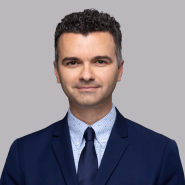Oblon Attends Business Methods Partnership Meeting
Associated People
Associated Practices
On March 15, 2018, Oblon attended Technology Center 3600’s Business Methods Partnership Meeting at the U.S. Patent and Trademark Office (USPTO) headquarters in Alexandria, Virginia. The goal of the meeting was to bring stakeholders together to share ideas, experiences and insights, and to provide a forum for an informal discussion of topics specific to Business Methods. The meeting also involved updates by Director Tariq Hafiz, and interactive discussions relating to subject matter eligibility training updates and Ex Parte Appeals at the Patent Trial and Appeal Board (PTAB).
In his updates, Director Hafiz indicated that the trends in Business Methods have consistently ranged between 20,000 and 25,000 filings per year over the last four years. The Director also noted the rise in Business Methods allowance rates from 11% in FY 2016 to 23.4% in FY 2017 with a stated goal to reach pre Alice (FY 2014) levels. To achieve these goals, the Director set forth several initiatives, including, for example:
- Supervisors proactively reviewing oldest pending cases in the Art Units and resolving outstanding issues to advance prosecution.
- Providing Examiners with additional assistance, when necessary, to get cases back on track.
- Bank of hours initiative serving as additional training time to allow Examiners to learn and apply methods from various §101 training topics, to increase the knowledge and experience of Examiners in effectively addressing case specific §101 related matters.
In his update, the Director further indicated that the Business Methods Art Units are looking to hire 75 more Examiners to the already existing 404 Examiners. This may indicate a growth expectation in new application filings and processing of old, pending applications. Lastly, Director Hafiz also noted that the MPEP has been updated to incorporate the 2014 Interim Eligibility Guidance and its updates. These updates can be found in Chapters 2100 (2103, 2104, 2105 and 2106) and 700 (706.03). Concurrent with the MPEP update, the USPTO has issued six sets of examples to explain how to apply the eligibility analysis to various fact patterns, including, Business Methods.
During the meeting, a decision-tree that Examiners would follow in conducting subject matter eligibility analysis of the claims was also presented. Additionally, the PTAB panel discussed ways that both Applicants and Examiners can more effectively communicate their case to the Board.
We believe the hiring of additional Examiners to Technology Center 3600 and Business Methods Art Units indicates an expectation of growth in filed applications and an effort to increase the bandwidth for expediting prosecution of pending cases, which is greatly welcomed.
It was evident from the discussion that there remain many uncertainties relating to the §101 analysis, including uniformity, application of case law, claim analysis/interpretation, etc.
The constantly shifting outcome of court cases continues to make subject matter eligibility a central theme pertaining to the Business Methods space. These partnership meetings are great opportunities to engage the USPTO to gain insight regarding examination processes and updates, and learn about issues facing both Examiners and Ap plicants.










 Counseling & Strategic Advice
Counseling & Strategic Advice IP Transactions
IP Transactions Litigation
Litigation PTAB Proceedings
PTAB Proceedings Start-Up
Start-Up Technology Transfer
Technology Transfer Trademark & Designs
Trademark & Designs U.S. Patent Procurement (Application Drafting & Prosecution)
U.S. Patent Procurement (Application Drafting & Prosecution)








